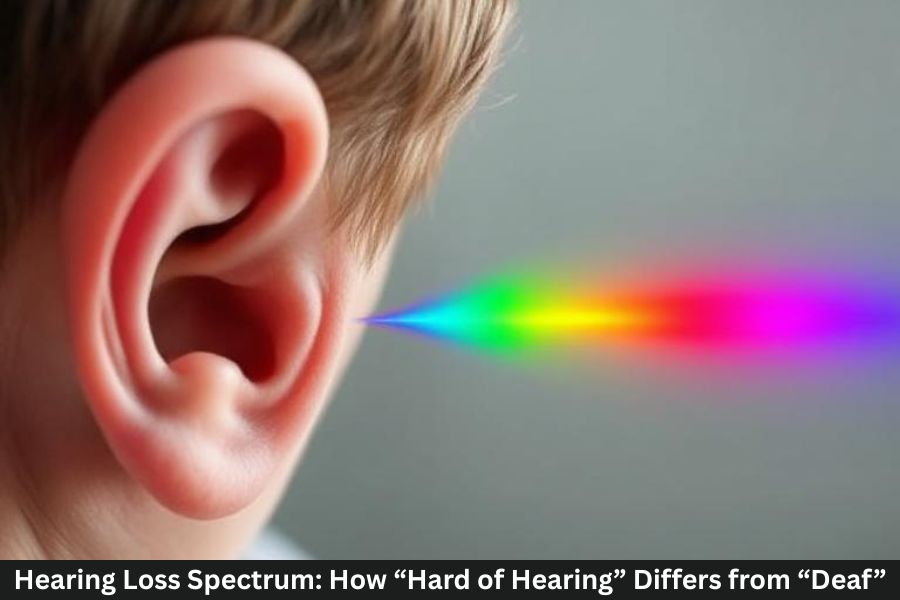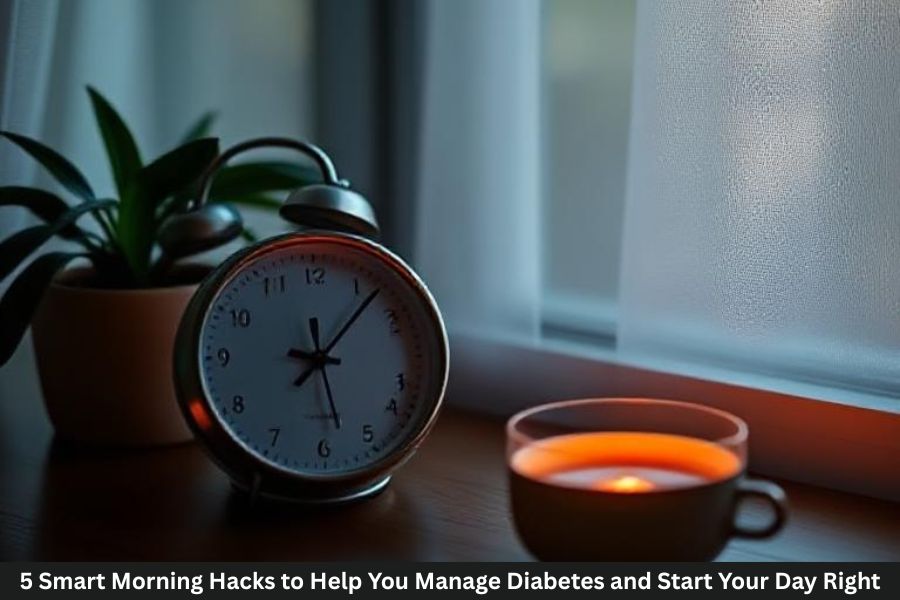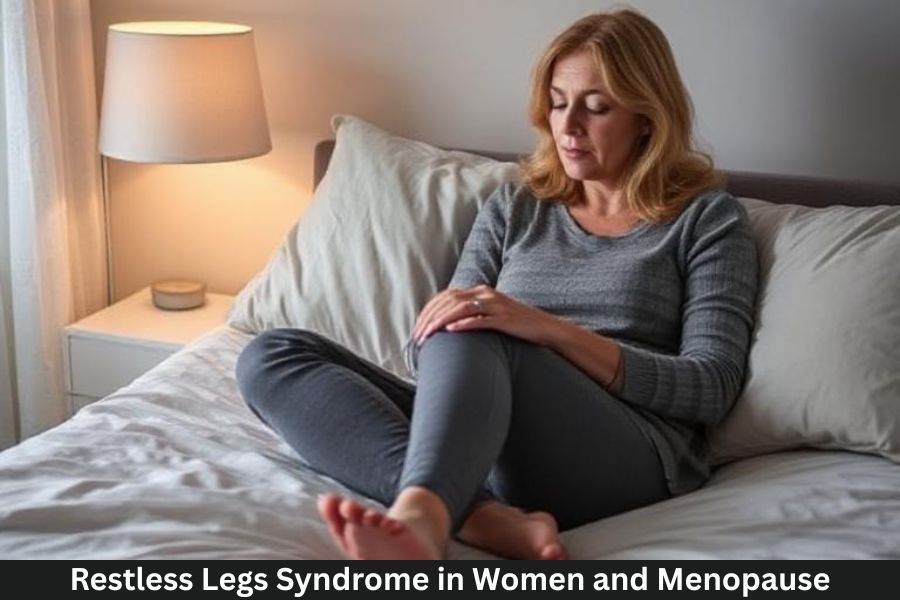Labels influence access, expectations, and support. Understanding the terms helps you communicate respectfully, request the right accommodations, and advocate for inclusion without making assumptions.
Hearing Loss Is a Spectrum, Not a Binary
Hearing changes across frequencies (pitches) and intensities (loudness).
- Mild (26–40 dB): Soft speech may be hard to catch, especially with background noise.
- Moderate (41–55 dB) / Moderately severe (56–70 dB): Normal conversation becomes challenging without amplification.
- Severe (71–90 dB): Most speech is inaudible without powerful amplification.
- Profound (90+ dB): Speech and many environmental sounds aren’t perceived; visual/tactile cues matter most.
An audiogram maps this out. Two people with the same “overall” number can still experience sound very differently depending on which frequencies are affected.
Core Definitions: “Hard of Hearing” vs. “Deaf”
Medical framing
- Hard of Hearing (HoH): Partial hearing loss ranging from mild to severe; many benefit from amplification (hearing aids, cochlear implants) and can use spoken language with supports.
- Deaf: Typically profound loss with limited to no benefit from amplification for spoken-language comprehension alone—visual languages and supports become primary.
Cultural/identity framing
- Hard of Hearing: May identify with hearing culture, Deaf culture, or both; often code-switches between spaces.
- Deaf (capital D): Identifies with Deaf culture, often uses a sign language as a primary language, and views deafness not as a deficit but as a rich linguistic and cultural identity.
The Big “D” vs. little “d”: What’s the Difference?
- Deaf (capital D): Cultural/linguistic identity; community membership, shared norms, sign language, Deaf arts/history.
- deaf (lowercase d): Audiological status describing the degree of hearing.
Someone can be deaf medically yet not identify as Deaf, or vice versa.
Age of Onset & Its Ripple Effects
- Prelingual (before language acquisition): Shapes how a person learns their first language—often a sign language when accessible early.
- Postlingual (after acquiring speech): Many maintain spoken language and add visual supports later.
Timing matters: early language access (any accessible language—signed or spoken with full supports) fuels cognitive development, literacy, and social connection.
Communication Preferences and Modalities
- Spoken language with or without amplification
- Lip/speech reading (helpful, but limited—many sounds look identical)
- Sign languages: ASL, ISL, BSL, Auslan, Libras, etc.—natural languages with grammar and nuance
- Cued speech and total communication (mixing modalities)
- Text-first: captions, messaging, note-taking
Rule of thumb: ask, don’t assume. One size never fits all.
Assistive Technologies & Accessibility Tools
- Hearing aids: Amplify specific frequencies; modern models pair with phones and mics.
- Cochlear implants: Bypass damaged hair cells to stimulate the auditory nerve; outcomes vary.
- Bone-anchored devices: Conduct vibration through bone for certain losses.
- Environmental supports:
- Live captions (CART), auto-captions (improving but imperfect)
- Induction loops & telecoils in venues
- Remote microphones, FM/DM systems
- Vibration/visual alerts, amplified phones, TTY/relay, real-time text
Accessibility is a stack: personal tech + environmental design + human behavior.
How Environments Change the Experience
- Quiet, well-lit rooms: Better lip/speech reading and device performance.
- Noisy restaurants, echoey halls: Harder even for mild losses.
- Meetings/classrooms: Seating, microphones, captions, and turn-taking rules can make or break access.
Design the space, not just the device.
Identity, Community, and Culture
Deaf culture centers sign languages, visual storytelling, direct eye contact, light tapping to get attention, community schools, and shared history. Many hard of hearing folks find belonging here too; others primarily inhabit hearing spaces and dip into Deaf spaces as needed. Both paths are valid.
Legal & Workplace Considerations (Plain-English Overview)
While details vary by country, common themes include the right to reasonable accommodations—for instance:
- Captions in meetings and videos
- Qualified interpreters for events and appointments
- Assistive listening systems in public venues
- Written instructions and visual alarms
Employers and schools benefit when they treat access as strategy, not charity.
Healthcare: Testing, Diagnosis, and Bias to Watch For
- Get a full workup with an audiologist (and ENT if indicated).
- Request clear explanations of your audiogram and practical implications.
- Watch for biases that push a single solution. The right option is the one that fits your life, language goals, and community.
Education & Early Intervention: Why Timing Matters
Early, accessible language—signed or spoken with robust supports—prevents language deprivation. Families thrive when they get options, mentors, and unbiased info. Schools and universities should provide captions, note-taking support, interpreting, and friendly acoustics.
Social Etiquette: What to Say (and Not to Say)
Do:
- Face the person, speak naturally, and keep your hands away from your mouth.
- Confirm preferences: “Captions okay?” “Want me to type this?”
- Rephrase if something wasn’t clear—don’t just repeat louder.
Don’t:
- Assume hearing aids “fix” everything.
- Shout or exaggerate mouth shapes—this distorts sound and lip patterns.
- Pat someone’s head or grab from behind to get attention—use a wave or a gentle shoulder tap.
Everyday Allyship: Practical Tips That Actually Help
- Turn on captions by default in meetings and videos.
- Use headset mics and mute background noise.
- Summarize key points in chat or notes.
- In groups, one person talks at a time; use a visible speaking order.
- At events, request loop systems or interpreters early.
Myths vs. Facts (Let’s Retire the Stereotypes)
- Myth: All Deaf people read lips.
Fact: Lip reading is partial at best. Visual languages/captions matter. - Myth: Hearing aids/cochlear implants restore “normal” hearing.
Fact: They assist; outcomes vary by person and context. - Myth: “Deaf” means zero hearing.
Fact: Many have residual hearing—but identity and access needs may still align with Deaf culture. - Myth: Speaking ability indicates hearing level.
Fact: Not reliably. Some Deaf folks speak clearly; some hearing folks don’t.
Choosing Words with Care: Person-First vs. Identity-First
Some prefer “person who is deaf/hard of hearing” (person-first). Others embrace “Deaf person” or “hard of hearing person” (identity-first). The respectful move: ask and mirror.
Travel, Emergencies, and Safety Planning
- Enable loud + vibration + visual alerts on phones.
- Save ICE cards noting communication preferences.
- Choose lodging with visual alarm systems if needed.
- In airports, pre-request assistance and text-based updates.
Future Trends: Tech, AI, and Accessible Design
Expect better real-time captions, smarter noise suppression, directional mics, and more universal assistive listening in public spaces. The goal: access by default, not by request.
Conclusion: Listening Beyond Sound
“Hard of hearing” and “Deaf” aren’t just labels—they’re lived experiences on a spectrum shaped by sound, language, culture, and environment. The difference isn’t only how much someone hears, but how they connect and which supports open the world. Ask people what works for them, design spaces that include everyone, and remember: access is a language of respect.
FAQs
1) Is it okay to say “hearing impaired”?
Many consider it outdated or negative. Prefer Deaf, hard of hearing, or the person’s stated preference.
2) Can someone be both hard of hearing and part of Deaf culture?
Absolutely. Identity can reflect community, language use, and values—not just decibel levels.
3) Do captions help people with hearing aids or cochlear implants?
Yes. Even with devices, captions boost comprehension—especially in noise or technical discussions.
4) How do I run an accessible meeting?
Turn on live captions, face the camera, avoid crosstalk, share visual notes, and confirm if interpreters or loops are needed.
5) My child is newly diagnosed. Where do I start?
Seek a multidisciplinary team (audiology, speech, Deaf mentors/educators). Prioritize early language access—signed, spoken with supports, or both—based on your child’s needs.



